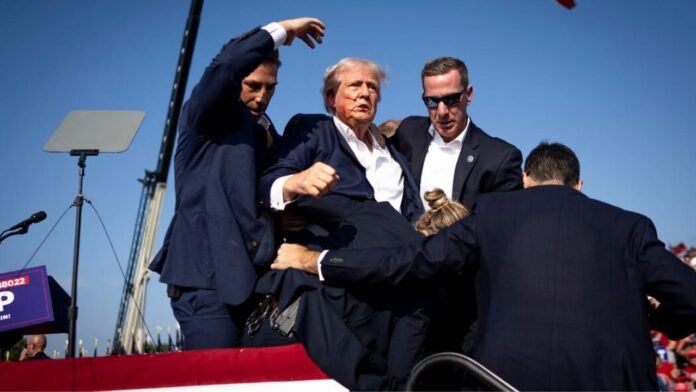A Secret Service review has uncovered significant communication failures during an assassination attempt on former President Donald Trump at a July 13 campaign rally in Butler, Pennsylvania. Acting Secret Service Director Ronald Rowe detailed these findings, emphasizing the need for a “paradigm shift” in how the agency conducts protective operations due to evolving threat levels.
Timeline of the July 13 Shooting
The attempt on Trump’s life took place when gunman Thomas Matthew Crooks, stationed on the roof of a nearby building, opened fire at 6:11 p.m., wounding Trump and two others and killing one attendee. Critical communication breakdowns played a role, including a delay in relaying the sighting of Crooks to Secret Service personnel just one minute before the attack. The local police confronted the crooks, but they fired shots before a coordinated response could take place. A Secret Service sniper eventually killed Crooks.
The internal review found “deficiencies” in advance planning and security implementation, leading to a lapse in protocols that allowed Crooks to access the rooftop. The report, currently under final review, highlights a reliance on mobile devices instead of secure radio communications, siloed information, and complacency among some agents. The Secret Service has vowed accountability for these shortcomings.
Fallout and Investigations
Kimberly Cheatle, who was the Secret Service Director at the time of the incident, resigned following the attack. A bipartisan congressional task force and the FBI are also conducting investigations into how Crooks was able to gain access to the rooftop so close to Trump.
The review summary released by the Secret Service highlights a lack of communication with local law enforcement and tactical teams, who were stationed in the same building as Crooks but did not coordinate with the Secret Service before the rally. There were also concerns about the sniper team’s positioning on the roof and a failure to broadcast Crooks’ description over Secret Service radio networks.
Another Assassination Attempt
This week, authorities intensified their scrutiny after arresting Ryan Wesley Routh, who allegedly carried an AK-47-style rifle on the grounds of Trump’s Florida golf course, preparing for another attack. Routh hid in the tree line near the course for over 12 hours before a Secret Services agent spotted him. No shots were fired at Trump, who was not in the suspect’s line of sight at the time.
Heightened Security and Funding Concerns
In response to these threats, the House unanimously passed a bill to increase Secret Services protection for all major presidential candidates, bringing their security on par with the sitting president. The agency has already implemented this higher protection since the July 13 shooting, but Rowe stressed that heightened threat levels are stretching Secret Service resources thin. The Biden administration is asking Congress for additional Secret Services funding as the agency seeks to strengthen security measures further.
Rowe assured the public that Trump’s protective detail has the “highest levels” of security but emphasized the need for increased resources and improved operational protocols to handle evolving threats.


